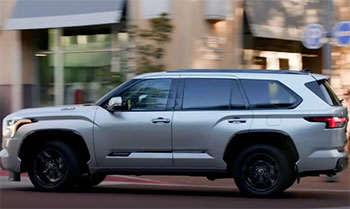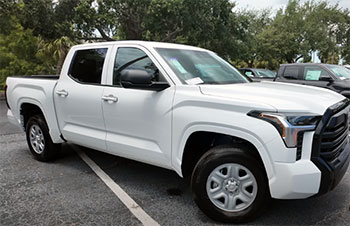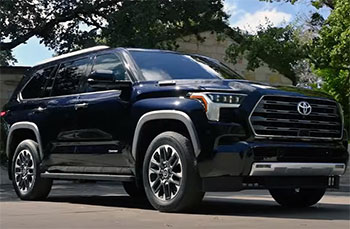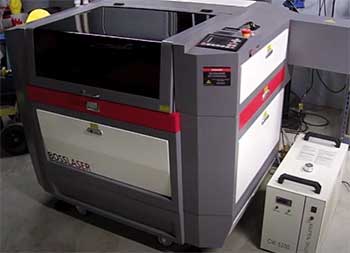As a longtime Toyota enthusiast, I’ve always been drawn to the brand’s reputation for reliability and versatility. Recently, I found myself torn between the 2025 Toyota Sequoia and the 2025 Toyota Tundra, two vehicles that share a platform but serve different purposes.
My goal with this article is to share my firsthand experience comparing these full-size powerhouses, breaking down their strengths, weaknesses, and key features to help you decide which one fits your lifestyle. From towing to family road trips, I’ll explore what sets them apart in a detailed, engaging comparison.
Comparison Table: Toyota Sequoia vs. Toyota Tundra (2025 Models)
| Feature | Toyota Sequoia | Toyota Tundra |
|---|---|---|
| Base Price | $64,520 | $42,185 |
| Engine | 3.5L Twin-Turbo V6 Hybrid (437 hp) | 3.5L Twin-Turbo V6 (389 hp, hybrid optional) |
| Fuel Economy (Combined) | 22 mpg (RWD) / 20 mpg (4WD) | 20 mpg (RWD) / 19 mpg (4WD) |
| Towing Capacity | Up to 9,520 lbs | Up to 12,000 lbs |
| Seating Capacity | 7-8 passengers | 5 passengers |
| Cargo Space | 86.9 cu. ft. (third row folded) | 6.5- or 8.1-ft bed |
| Third-Row Seating | Standard | Not available |
| Ground Clearance | 8.6-9.1 inches (trim-dependent) | 8.5-9.4 inches (trim-dependent) |
| Infotainment | 14-inch touchscreen (most trims) | 14-inch touchscreen (most trims) |
| Drivetrain | RWD standard, 4WD optional | RWD standard, 4WD optional |
My Experience With the Toyota Sequoia

Driving the 2025 Toyota Sequoia felt like commanding a fortress on wheels. As someone who often juggles family duties and weekend adventures, I appreciated its cavernous interior and rugged capability.
The Sequoia is Toyota’s full-size SUV, built on the same GA-F platform as the Tundra, but designed with families in mind.
Its bold, chunky styling screams durability, and the hybrid i-FORCE MAX powertrain—standard across all trims—delivers a punchy 437 horsepower.
I took it on a road trip with my family, and the spacious cabin, complete with a sliding third row, made packing for five people and their gear a breeze.
The Sequoia’s ride is smooth for its size, though I noticed the solid-axle rear suspension made the third row feel a bit cramped compared to competitors like the Chevy Tahoe. Towing a 7,000-pound trailer was effortless, thanks to the 583 pound-feet of torque, but I could feel the weight when navigating tight city streets.
The 14-inch touchscreen, standard on most trims, was a highlight—responsive and packed with features like Apple CarPlay and a Wi-Fi hotspot. Off-road, the TRD Pro trim impressed me with its Fox dampers and 33-inch tires, tackling rocky trails with confidence. But the price tag, starting at $64,520, gave me pause—more on that later.
Pros Of the Toyota Sequoia
- Powerful Hybrid Powertrain: The i-FORCE MAX hybrid, combining a 3.5-liter twin-turbo V6 with an electric motor, churns out 437 horsepower and 583 pound-feet of torque. It’s a beast for towing and offers better fuel economy (22 mpg combined for RWD) than most full-size SUVs.
- Spacious Family-Friendly Interior: With seating for up to eight, the Sequoia’s cabin is a game-changer for families. The adjustable cargo shelf and sliding third row make it versatile for groceries, sports equipment, or camping gear.
- Advanced Technology Suite: The 14-inch touchscreen (standard on all but the base SR5) is intuitive, supporting wireless smartphone integration and a premium JBL audio system. Toyota Safety Sense-P, with features like lane-keeping assist and adaptive cruise control, comes standard.
- Off-Road Capability: The TRD Pro trim, with its locking rear differential and upgraded suspension, handled rough terrain like a champ during my test drive. Even non-TRD models can be equipped with the TRD Off-Road package for extra ruggedness.
- Reliability Reputation: Both the Sequoia and Tundra score a perfect 10/10 in iSeeCars’ reliability ratings, giving me peace of mind for long-term ownership.
- Towing Prowess: With a max towing capacity of 9,520 pounds (RWD SR5), it outpaces the Chevy Tahoe’s 8,400 pounds, making it ideal for trailers or boats.
Read More: My Thoughts On GMC Terrain Vs. Ford Escape
Cons Of the Toyota Sequoia
- High Starting Price: At $64,520, the Sequoia’s base price is steep compared to rivals like the Ford Expedition ($51,080). Even a well-optioned Tundra can cost less, which made me question its value.
- Cramped Third Row: The solid-axle rear suspension eats into third-row space, making it less comfortable for adults than competitors like the Chevy Tahoe or Toyota’s own Grand Highlander.
- Limited Cargo Space: With all seats up, cargo space is just 22.3 cubic feet—less than the Tahoe or Expedition. Folding the third row helps, but it’s still not class-leading.
- Bulky Handling: The Sequoia’s size makes it a handful in tight spaces. I struggled to park in urban lots, and its turning radius felt wider than the Tundra’s.
- Fuel Economy Could Be Better: While 22 mpg combined is decent for a large SUV, four-wheel-drive models drop to 20 mpg, and real-world towing MPG can dip into the single digits.
- Premium Trims Get Pricey: The Capstone trim can push past $80,000, which feels excessive when you consider the Tundra offers similar features for less.
My Experience With the Toyota Tundra

Switching to the 2025 Toyota Tundra was like trading a family minivan for a workhorse.
As a pickup truck, the Tundra is all about utility, and I felt that from the moment I climbed into its CrewMax cabin.
Its base 3.5-liter twin-turbo V6 produces 389 horsepower, but I opted for the i-FORCE MAX hybrid (same as the Sequoia) for its 437 horsepower and 583 pound-feet of torque.
Towing a 10,000-pound trailer felt rock-solid, thanks to the Tundra’s 12,000-pound max capacity—higher than the Sequoia’s.
The Tundra’s bed (6.5 or 8.1 feet, depending on configuration) was a game-changer for hauling kayaks and lumber, though I missed the Sequoia’s enclosed cargo space during rainy weather.
The interior is nearly identical to the Sequoia’s, with the same 14-inch touchscreen and plush options on higher trims like the Platinum. Off-road, the TRD Pro was a beast, but I found the base SR trim a bit bare-bones. At $42,185, the Tundra’s starting price is a major advantage, but fuel economy (20 mpg combined for RWD) lags slightly behind the Sequoia.
Pros Of the Toyota Tundra
- Affordable Base Price: Starting at $42,185, the Tundra is nearly $22,000 cheaper than the Sequoia, making it a better value for budget-conscious buyers.
- Superior Towing Capacity: With a max towing capacity of 12,000 pounds, the Tundra outperforms the Sequoia and most full-size SUVs, perfect for heavy trailers or equipment.
- Versatile Bed Options: The 6.5- or 8.1-foot bed offers unmatched open-air hauling flexibility. I easily fit large outdoor gear that wouldn’t have worked in the Sequoia’s cargo area.
- Shared Technology: Like the Sequoia, it boasts a 14-inch touchscreen, Toyota Safety Sense-P, and optional JBL audio. The interface is user-friendly and modern.
- Off-Road Prowess: The TRD Pro’s skid plates, all-terrain tires, and higher ground clearance (up to 9.4 inches) made light work of muddy trails during my test.
- Strong Resale Value: The Tundra retains 69.6% of its value after five years, compared to the Sequoia’s 56.4%, according to iSeeCars, which is a big win for long-term ownership.
Cons Of the Toyota Tundra
- Limited Passenger Capacity: With seating for only five, the Tundra isn’t ideal for large families. I missed the Sequoia’s third row when traveling with extra passengers.
- No Enclosed Cargo Space: The open bed is great for hauling but vulnerable to weather. I had to invest in a tonneau cover to protect gear from rain.
- Base Model Feels Basic: The SR trim lacks the polish of higher trims, with a smaller 8-inch touchscreen and fewer creature comforts compared to the Sequoia’s base model.
- Fuel Economy Lags: At 20 mpg combined (RWD), it’s slightly less efficient than the Sequoia, and towing heavy loads can drop MPG to the low teens.
- Hybrid Costly on Lower Trims: The i-FORCE MAX hybrid is only available on Limited and above, adding significant cost to the base price.
- Ride Quality: The Tundra’s suspension, while great for towing, felt stiffer than the Sequoia’s on long highway drives, especially when unloaded.
Digging Into the Details
Powertrain and Performance
Both the Sequoia and Tundra share Toyota’s GA-F platform, giving them similar bones, but their powertrains tell different stories. The Sequoia comes standard with the i-FORCE MAX hybrid, a 3.5-liter twin-turbo V6 paired with an electric motor, producing 437 horsepower and 583 pound-feet of torque. The Tundra offers a base 3.5-liter twin-turbo V6 (389 horsepower) with the hybrid as an option on higher trims. Both use a 10-speed automatic transmission, delivering smooth shifts and robust performance.
I found the Sequoia’s hybrid powertrain responsive, especially when merging onto highways or towing. The electric motor provides instant torque, making it feel quicker off the line than the Tundra’s base engine. However, the Tundra’s hybrid option matched the Sequoia’s power, and its higher towing capacity made it the go-to for heavy-duty tasks. Fuel economy is a close call—22 mpg combined for the Sequoia (RWD) versus 20 mpg for the Tundra (RWD)—but the Sequoia’s standard hybrid gives it a slight edge.
Towing and Hauling

Towing is where the Tundra shines. Its 12,000-pound capacity is a class leader, easily handling my 10,000-pound trailer without breaking a sweat.
The Sequoia’s 9,520-pound max is still impressive, outpacing the Chevy Tahoe, but it felt slightly less stable at higher weights.
Both vehicles offer towing aids like Trailer Backup Guide and Straight Path Assist, but the Tundra’s longer wheelbase provided better stability.
For hauling, the Tundra’s open bed is unbeatable for oversized items like furniture or dirt bikes.
The Sequoia’s enclosed cargo area, while versatile with 86.9 cubic feet (third row folded), couldn’t match the Tundra’s flexibility for large, unwieldy loads. However, the Sequoia’s adjustable cargo shelf was a lifesaver for organizing smaller items.
Interior and Comfort
Inside, both vehicles share nearly identical dashboards, with the 14-inch touchscreen stealing the show. The Sequoia’s cabin feels more family-oriented, with soft-touch materials and optional captain’s chairs in the second row. I loved the sliding third row for extra cargo flexibility, but adults in the back complained about legroom. The Tundra’s CrewMax cabin is spacious for five, but without a third row, it’s less versatile for large groups.
Both offer premium options like heated/ventilated seats and a JBL audio system on higher trims. The Sequoia’s Platinum and Capstone trims feel more luxurious, but the Tundra’s 1794 Edition gives it a run for its money with leather upholstery and wood accents. Ride quality leans in the Sequoia’s favor for long trips, thanks to its smoother suspension, but the Tundra’s stiffer setup excels when loaded.
Off-Road Capability
For off-road enthusiasts, both vehicles offer TRD Pro trims that are ready for adventure. The Sequoia TRD Pro’s Fox dampers, skid plates, and 33-inch tires handled rocky trails with ease, though its size made narrow paths tricky. The Tundra TRD Pro felt more agile off-road, with slightly higher ground clearance (9.4 inches vs. 9.1 inches). Both benefit from Toyota’s Crawl Control and hill-descent control, but the Tundra’s lighter weight gave it an edge on steep inclines.
Pricing and Value
Price is a major differentiator. The Tundra’s $42,185 starting point makes it accessible, while the Sequoia’s $64,520 base price feels like a premium purchase. A fully loaded Tundra Platinum with the hybrid powertrain can approach $70,000, still less than a loaded Sequoia Capstone. The Tundra’s better resale value (69.6% vs. 56.4% after five years) makes it a smarter long-term investment, but the Sequoia’s standard hybrid and family-friendly features justify its cost for some.
Real-World Scenarios
To put these vehicles in context, let’s consider two scenarios. First, imagine you’re a family of six planning a cross-country road trip with a small camper. The Sequoia’s third row, hybrid efficiency, and 9,520-pound towing capacity make it the better choice. Its enclosed cargo space keeps gear secure, and the spacious cabin ensures everyone’s comfortable.
Now, picture a contractor hauling equipment to a job site. The Tundra’s 12,000-pound towing capacity and open bed are perfect for heavy tools and materials. Its lower price and better resale value make it a practical choice for work-focused buyers. Your needs—family vs. utility—will dictate the winner.
Making the Decision
Choosing between the Sequoia and Tundra comes down to lifestyle. I leaned toward the Sequoia for its family-friendly design and standard hybrid, but the Tundra’s affordability and towing prowess were hard to ignore. If you need space for more than five people, the Sequoia is your pick. If towing and hauling are priorities, the Tundra takes the crown. Both deliver Toyota’s legendary reliability, so you can’t go wrong either way.
Read More: My Thoughts On Acura MDX Vs. Jeep Grand Cherokee
Frequently Asked Questions (FAQ)
No, the Sequoia is a full-size SUV with third-row seating, while the Tundra is a pickup truck with an open bed. They share the same platform and similar tech but serve different purposes.
Yes, the Sequoia is similar in size to the Chevy Tahoe, though slightly shorter in length. The Tahoe offers more third-row legroom and cargo space.
Yes, the Sequoia uses the same GA-F body-on-frame platform as the Tundra, ensuring similar durability and performance.
The Sequoia’s high price reflects its standard hybrid powertrain, advanced tech, and family-focused features. Its premium trims and Toyota’s reliability reputation also drive up costs.
Conclusion: For You, the Buyer
You’re probably wondering which Toyota is right for you—the Sequoia or the Tundra. If you’re hauling kids, gear, and maybe a trailer for family adventures, the Sequoia’s spacious cabin and hybrid efficiency make it a fantastic choice. If your focus is towing heavy loads or hauling equipment, the Tundra’s lower price, higher towing capacity, and versatile bed are hard to beat. Both vehicles embody Toyota’s commitment to reliability and performance, so your decision hinges on whether you prioritize family comfort or workhorse utility. Test drive both to feel the difference and choose what fits your life.

